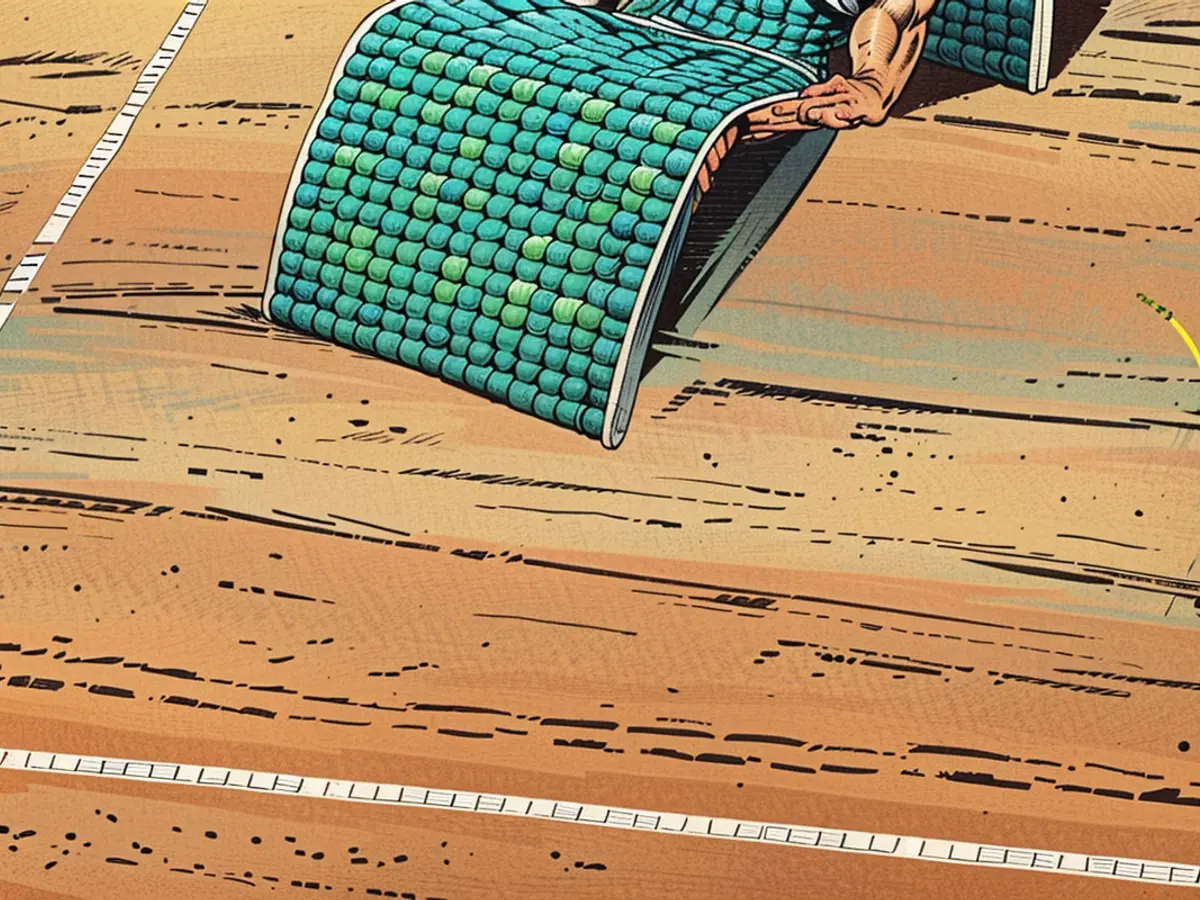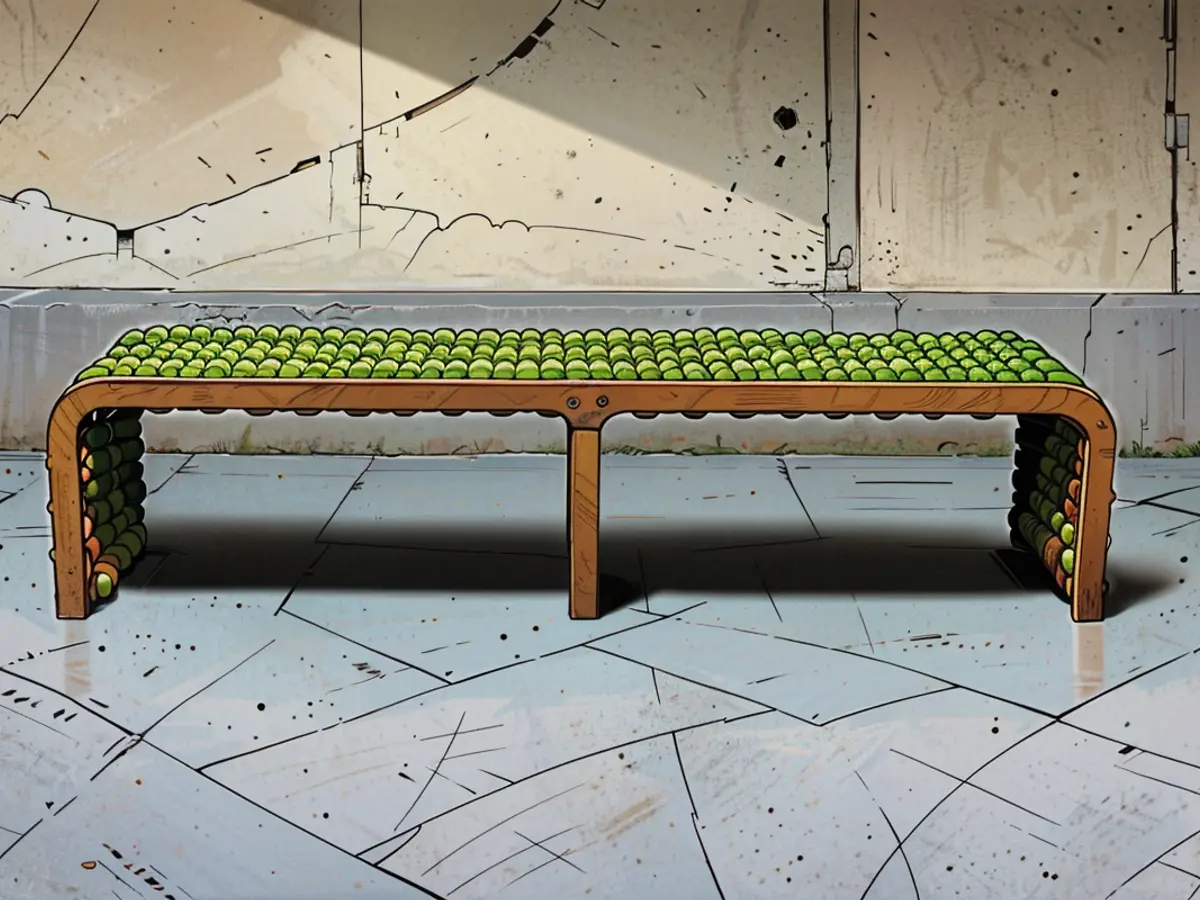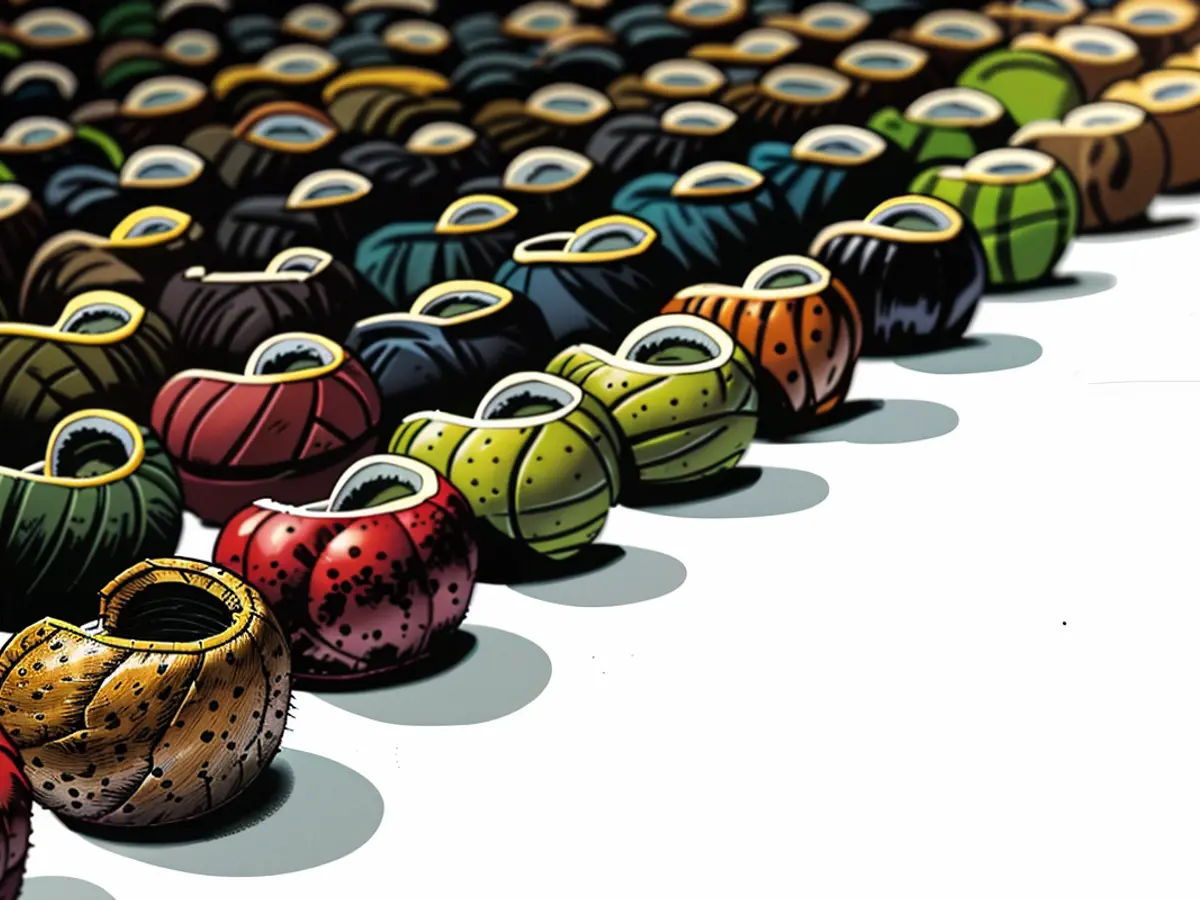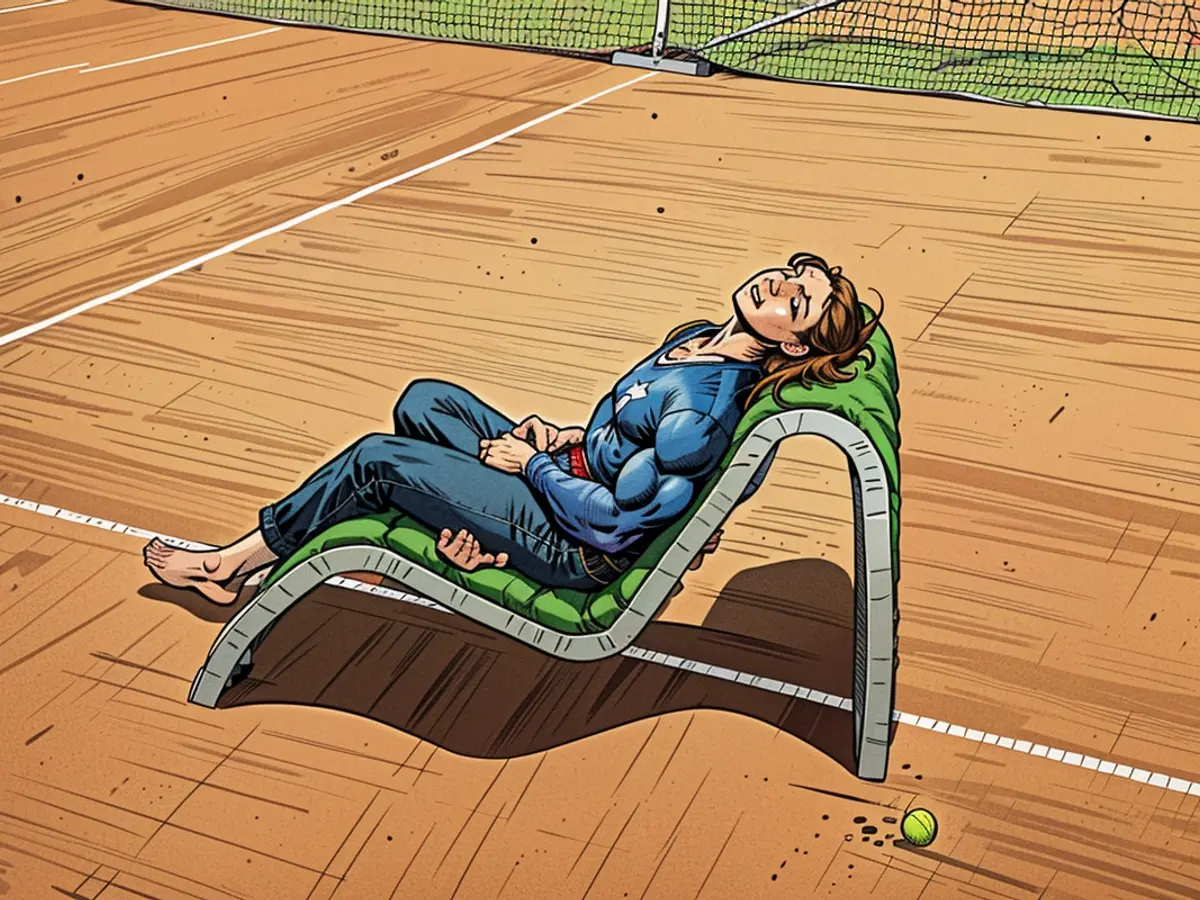Explore the creative individual converting tennis balls into functional furniture items.
At least that's the aim of Belgian ecodesigner Mathilde Wittock, who crafts custom furniture utilizing discarded tennis balls. Wittock's minimalistic, contemporary chaise longues lack cushions entirely, except for the cushioning of 500 meticulously placed tennis balls. Her meter-long benches follow suit, boasting around 270 balls that are both stylish and structurally sound.
"It takes around 24 different manufacturing processes to produce a tennis ball, which is approximately five days. Then it has a short lifespan," Wittock shared with CNN during a call from Brussels. "I was looking into tennis balls because I played tennis myself, so I know there's a lot of waste."
Approximately 300 million tennis balls are manufactured annually, and nearly all of them wind up in landfills, taking over 400 years to decompose. The US Open, which recently concluded, uses around 70,000 annually, with Wimbledon closely following at 55,000. Wittock estimates the lifespan of a ball to be just nine games, depending on the level of tennis being played. "Even if they're contained within their box, if the box has been opened, the gas inside the tennis balls will be released over time," she explained. "Eventually, they'll deflate, and you'll be left with no choice but to dispose of them."

Wittock takes around three to four weeks to construct a chair, which she sells for $2,900. Each ball is cut and dyed by hand, with colors carefully selected to complement the client's space. Through numerous trials and errors, she managed to manipulate the shape of the ball while concealing its prominent features. "I needed to find an assembly that altered the distinctive appearance of the tennis balls," she said. "It's yellow with white lines. How do I distort that relationship?"
Wittock's exploration of the sports equipment's design potential began while she was studying at Central Saint Martins art school in London. "I was really interested in eco-design and where I sourced my materials," she told CNN. "And I realized that it was always very complicated to trace the history of materials. You never know where they come from, or how they've been processed. I got really angry at that."

Today, Wittock obtains all her materials via donations from tennis clubs. Collections began modestly, with just 10 donated balls at a time, but grew quickly. Now, she works with the Federation of Wallonia in Brussels, who have given her their entire stock - around 100,000 balls. "It's enough for a few months," she said. "If things get out of hand. Maybe nine months, because I have a rhythm of cutting tennis balls. I can get through 1,800 per week."
But her objectives extend beyond creation. In fact, Wittock places even more importance on how her pieces are dismantled. "I'm an eco designer," she said. "Eco design is about circularity. You can use excellent materials with low-carbon emissions or recycled materials, but you need to consider the product's final cycle. If it's not a circle, and if you can't use those elements again, it's not eco design. It's even worse, because it's new materials." At the end of her furniture's life, Wittock can disassemble the interconnected tennis balls (which don't require glue to bind) to be recycled. The fuzz can be burned off, and the rubber can be shredded to produce bouncy playground mats.

Her next challenge? Tapping into the "tens of thousands of tennis clubs" in North America. "I've got so many people interested in the US," Wittock said. "I'm really thinking of heading over there and starting recycling." So the next time you watch a tournament, don't be discouraged by the discarded balls - their life cycle might just be commencing.
Upon traveling to North America, Wittock plans to collaborate with tens of thousands of tennis clubs, aiming to reduce waste by recycling their discarded tennis balls. To ensure the longevity of her eco-friendly design philosophy, Wittock emphasizes the importance of disassembling her furniture at the end of its life cycle, allowing for the recycling of the interconnected tennis balls.








